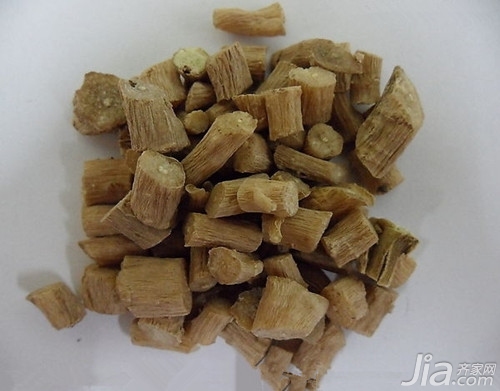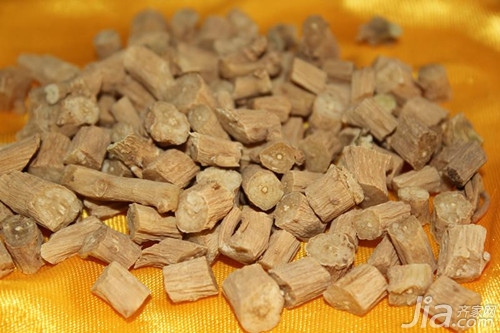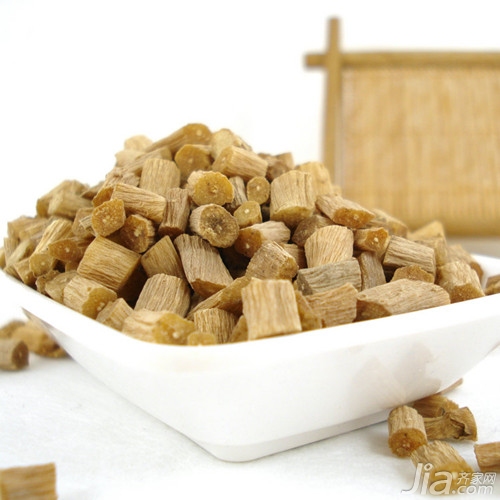Achyranthes bidentata Blume is a perennial herb of the family Asteraceae and Achyranthes, 70-120 cm tall. Cylindrical, 5-10 mm in diameter, often grows under the hillside forest. The root contains saponin, and contains ecdysterone and Achyranthes ketoxin, and has the equivalent of purifying the meridian, supplementing the liver and kidney, strengthening bones, and diuresis and dripping. Xiao Bian to introduce what is Achyranthes? The function and effect of Achyranthes and methods of eating .

What is Achyranthes
Achyranthes bidentata (scientific name: Achyranthes bidentata) is a plant of the family Achaetea. Distributed in Africa, Russia, Vietnam, India, Malaysia, the Philippines, North Korea, and China, except in the Northeast and elsewhere in the country, growing in 200 meters to 1,750 meters above sea level, often growing under the slopes of the forest, has not yet been introduced by artificial cultivation.
Achyranthes are slender, cylindrical, sometimes slightly curved, with thick upper ends and 30-60 cm long. Diameter 0.2 ~ lcm. The surface is yellowish or light brown with fine longitudinal wrinkles and lateral root marks. Hard and brittle, moisture-flexible, easy to break, cross-section light yellow, horny-like, yellow-white dots (abnormal vascular bundles) intermittently arranged into several rounds of concentric rings. Gas slightly, slightly sweet astringent. The main component of Achyranthes is triterpene saponin root, which produces oleanolic acid after hydrolysis. It also contains Ecdysterone, Inokosterone, and Rubrosterone. It contains polysaccharides, amino acids, alkaloids, and coumarins. The root contains a large amount of potassium salts and betaine, sucrose, etc.
Wild Achyranthes also has medicinal properties, but its efficacy is slightly different from that of cultivated products. It is a kind of “Achyranthes bidentataâ€. Its characteristics are as follows: The rhizome is cylindrical, 1-3cm long, 5-10mm in diameter, gray-brown, upper There are stem base residues, surrounded by a large number of different thickness of the root, the root was long cylindrical, slightly curved, more than 15cm in length, the following, smaller, the largest diameter of up to 4mm; surface grayish brown, fine fine vertical grain . Slightly soft, easy to break after drying, yellow-brown cross-section, visible circulatory vascular bundles. Gas micro, sweet and slightly sweet. In Henan, Shanxi, Hebei, Shandong, Jiangsu and other places have distribution. The Achyssian Tajikistan generally goes up and down at 9 yuan. The price of first-class goods is at 20 yuan, fresh goods are at 2 yuan, and the price is about 1 yuan.

2 How to eat Achyranthes
Achyranthes, the root of Achyranthes perennial herb, Achyranthes bidentata. "Drugification and justice" said: "Achyranthes, sweet and can make up, with astringent can be converged, and painstakingly, with the person kidney. Gathering the kidney main closed, astringent fine convergence of blood, cited drugs down." Visible With blood circulation, liver and kidney, strong bones and muscles, Lee water Tonglin, the effect of blood descending, to treat liver vertigo, waist and knee pain, bone weakness, adverse urination, swollen gums and other cards.
Achyranthes is also known as kyphosis, cattle stalks, a hundredfold, tinea quinquefasciae, foot stilts, achyranthes quinquefolium, achyranthes bidentata, true eve, huaixi, huai achyranthes, sichuan achyranthes, burdock shank, red achyranthes, cow gait , cattle grams of knees, cattle knees, sticky grass roots, bone dagger, bison knees, cattle cover knees and so on.
Achyranthes is a traditional Chinese medicinal material, which is characterized by waist and knee pain; soft lower limbs; blood stagnation; dysmenorrhea; postpartum hemorrhage; abdominal pain; Swelling pain. But Achyranthes can also be eaten. The efficacy and function of Achyranthes mainly include promoting blood circulation; strengthening bones and muscles; descending the enemy's country (fire); supplementing the liver and kidney; diuresis Tonglin. Achyranthes: pick up impurities, wash, soften, go to reeds, cut into sections, and dry them. Wine Achyranthes: Take Achyranthes segment, spray with rice wine and mix well, moisten, set the pan fry until slightly dry, remove and let cool. (Each 100 kg of buckwheat segment, 10 pounds of rice wine)
1. "Leigong Artillery Paradox": Where the Achyranthes, go to the head and dust, dip a night with the natural juice of Huang Jing, scoop out, fine, dry, use it.
2. "Outline": Achyranthes, this wine can only be immersed in medicine. If you want to descend, you will use it, nourish it, bake it, or mix it with steam. Achyranthes methods of eating are taken internally: Jiantang, 5-15g; or soaked in wine; or into the pill, scattered. External use: appropriate amount, phlegm dressing; dripping juice; or grinding into the teeth. The main recipes are Achyranthes loofah soup and Achyranthes edulis.

3 Achyranthes efficacy and function
Achyranthes efficacy: waist and knee pain; soft lower limbs; blood stagnation and amenorrhea; dysmenorrhea; postpartum blood stasis and abdominal pain; sign warts; no clothing; hot shower; hemorrhagic; bruises; bloated and malignant sores; sore throat.
1, for stagnation and amenorrhea, postpartum pain, or flutter pain embolism.
Achyranthes is good at promoting blood circulation. It is used for gynecological and traumatic diseases that are often stagnant and stagnant, and often used with live flowers, peach kernels, Chinese angelica, and yanhusuo. It can both regulate blood circulation and heal the wounds.
2, for waist and knee pain, foot and knee weakness.
Achyranthes down the good, into the liver and kidney two classics, can make up liver and kidney, strong bones and muscles, but also through the blood, Lee joints, for the treatment of waist and knee lower limb disorders commonly used drugs. The waist and knee pain caused by lack of liver and kidney is often equivalent to herb, dog's ridge and papaya. If the waist and knee joint pain is caused by hot and humid bets, it is often equivalent to herb and Phellodendron. For example, rheumatism, lower limb joints The pain is very different. It can be equivalent to papaya, prevent yourself, and live alone.

3, for vomiting blood, blood stasis, gum swelling, headache dizziness embolism.
Achyranthes decreased bitter discharge, can lead to blood, thermal discharge, can cure the symptoms of upper blood heat and lameness, often with oriental arborvitae leaves, Rhizoma Imperatae, small peony and other drugs to cure vomiting blood, stasis blood; can also be equipped with yin Heat-clearing medicines such as raw materials, plaster, etc., used to treat swelling and pain of the gums are symptoms of Yin Huo-wang; cure liver yang epistaxis, blood and go on, headache, dizziness, often with Pinggan medicine such as behalf of meteorite, keel, oysters Equivalent.
4, for adverse urination, leachate astringent pain and hematuria embolism.
Information on the efficacy and function of Achyranthes and its consumption methods was introduced here. I hope this article will be helpful to everyone. If you still have something you don't understand, you can leave a message to Xiaobian at the bottom. We will answer your questions as soon as possible.
Solid wood floor keel prices living room Feng Shui plants living room what plants Feng Shui good tata wooden doors solid wood floor keel
Ferroalloys, a broadly defined ferroalloy is a product that is used as a deoxidizer, elemental additive, etc. in steelmaking to add iron to certain properties or to meet certain requirements.
Property: The main element of the ferroalloy generally has a high melting point, or its oxide is difficult to reduce, and it is difficult to refine the pure metal. If it is together with the iron, it is easier to reduce the smelting. The use of ferroalloys in iron and steel smelting, in which iron is not only harmless, but because of the fusing of molten steel is more favorable. Therefore, deoxidation and alloying in the steelmaking process are mostly added in the form of iron alloys. Iron alloys are generally brittle and cannot be used as metal materials.
Purpose: As a deoxidizer for steelmaking, silicon manganese, ferromanganese and ferrosilicon are the most widely used . As strong deoxidizers, aluminum (aluminum iron), silicon calcium, silicon zirconium, etc are used . Commonly used alloy additives are: ferromanganese, ferrochromium, ferrosilicon, ferrotungsten, ferromolybdenum, ferrovanadium, ferrotitanium, ferronickel, niobium (neodymium) iron, rare earth iron alloy, ferroboron, ferrophosphorus and so on. A variety of ferroalloys, in accordance with steelmaking needs, are regulated in many grades based on the content of alloying elements or the level of Carbon contained, and the impurity content is strictly limited. Ferroalloys containing two or more alloying elements are called composite ferroalloys. The use of such ferroalloys can add deoxidizing or alloying elements at the same time, which is beneficial to the steelmaking process and enables the more comprehensive and efficient utilization of symbiotic ore resources. Commonly used: manganese silicon, silicon calcium, silicon zirconium, silicon manganese aluminum, silicon manganese calcium and rare earth ferrosilicon.
Ferroalloys
Ferroalloys,Ferro Silicon,Ferro Tungsten,Different Shape Ferroalloys
Hwa Seng Resources (Hong Kong) Co., Limited , https://www.hwaseng-resources.com